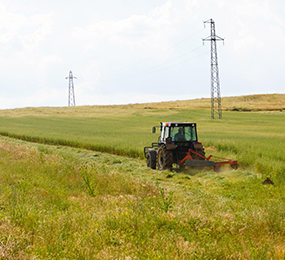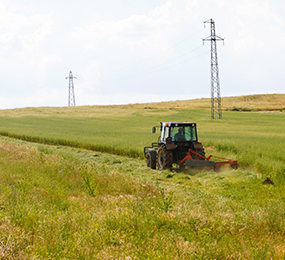Electrifying Non-Road Mobile Machinery (NRMM) is becoming a powerful solution in the global fight against climate change. NRMM, which includes machinery used in construction, agriculture, mining, and industrial applications, has traditionally relied on diesel engines. These machines contribute significantly to greenhouse gas (GHG) emissions, particularly carbon dioxide (CO?) and nitrogen oxides (NOx). By transitioning to electric-powered NRMM, industries have the opportunity to drastically cut emissions and move toward a more sustainable future.
Reduction in Greenhouse Gas Emissions: One of the most impactful benefits of electrifying NRMM is the reduction in GHG emissions. Diesel-powered machinery emits large amounts of CO?, a major contributor to global warming. Electrified machinery, on the other hand, produces zero direct emissions during operation. This shift away from combustion engines significantly reduces the carbon footprint of industries that rely on heavy-duty machinery. For sectors like construction and mining, which are among the largest emitters, electrification offers a direct pathway to reducing their environmental impact.
Improved Air Quality: Beyond carbon reduction, electric NRMM helps decrease the emission of other pollutants such as NOx and particulate matter, which are common byproducts of diesel combustion. These pollutants not only harm the environment but also pose health risks to workers and nearby communities. Electrification can contribute to cleaner air and a healthier working environment.
Sustainable Energy Integration: As renewable energy sources like solar and wind become more integrated into the power grid, the environmental benefits of electrified NRMM are amplified. Electric machinery powered by clean energy further reduces the reliance on fossil fuels, making industrial operations more sustainable.
Challenges and Future Outlook: Despite the clear environmental advantages, the widespread adoption of electric NRMM faces challenges, such as the need for charging infrastructure and the high upfront cost of electric machinery. However, as battery technology improves and government incentives for decarbonization increase, more industries are likely to make the shift to electric NRMM.
In conclusion, the electrification of NRMM plays a critical role in reducing GHG emissions, improving air quality, and promoting sustainability across industries. As technological advancements continue, electrified NRMM will be a cornerstone in achieving global climate goals.
For more details and registration information, visit https://www.leadventgrp.com/events/2nd-annual-non-road-mobile-machinery-electrification-and-decarbonization-forum/details.
For more information and group participation, contact us: [email protected]
















